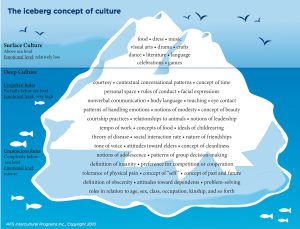2 Teaching Practice as Doing and Being
Culturally responsive teaching is a continuous, dual practice of doing and being.
Process One: Being
This process is a personal journey. It involves accountability for one’s personal perspectives, cultural lens, implicit biases, & assumptions about others. It is one of growth & curiosity and transcends our classroom self.
Aligned with Pedagogical Changes
- Critical thinking & self-reflection
- Understand and address privilege, bias, & microaggressions
- Foster empathy
- Demonstrate authenticity and transparency
- Develop cultural knowledge, & curiosity
- Community building
Process Two: Doing
This is the process of building learner and classroom belonging. It involves actionable and intentional teaching methods that cultivate a sense of care, support, and value for learners and the cultures they represent
Aligned with Curriculum Changes
- Design for engagement
- Learn, use, and uphold names and pronouns
- Representation in authors, theorists & content contributors
- Representation in content/materials
- Recognize & affirm “surface” culture (food, holidays)
- Recognize & engage with “deep culture” (communication styles, cultural attitudes)


